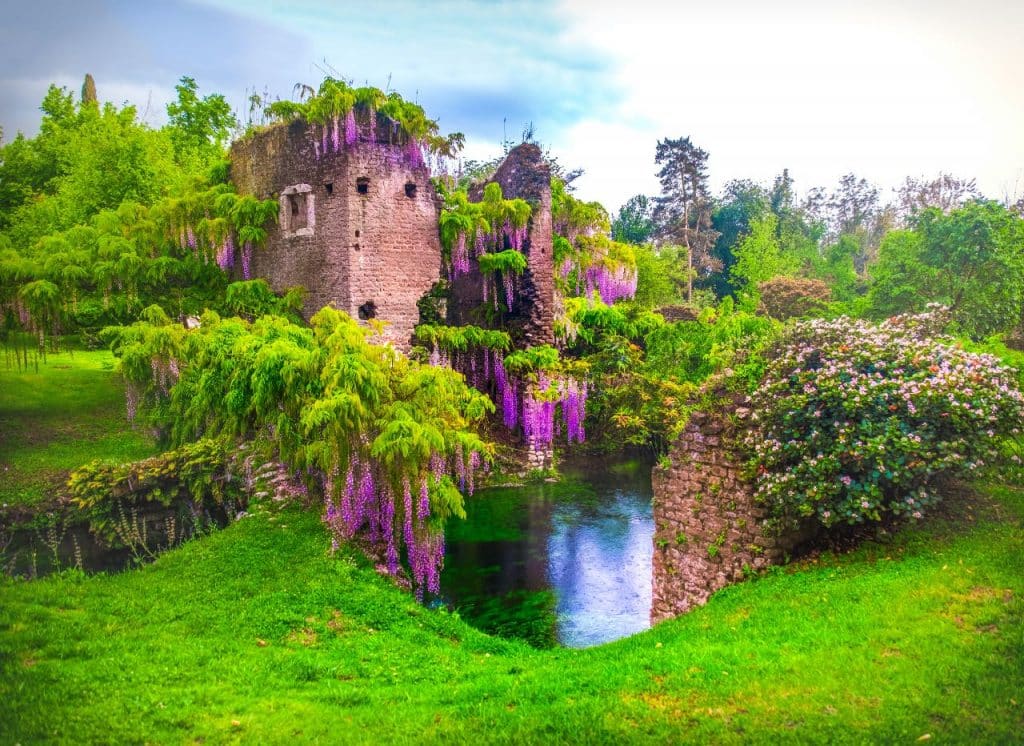The New York Times called it “the most beautiful romantic garden in the world”. Nymphs, thousands of bushes, tall trees, tropical plants, rose gardens arranged in a chromatic order that in all seasons offers incredible shows. And then a ruined tower, the embattled castle, the stone walls that are reflected in the transparent water of the springs and the small lake.
A garden that has ancient origins, if it is true that in Roman times was built a temple dedicated to the gods of spring waters, the Naiadi Nymphs, hence the name of the river Ninfa. When, in the following centuries, the abandoned Via Appia was invaded by swamps, Ninfa, at the foot of Monti Lepini, had become the precious link that led from Rome to the south. Hence the attention and the aims of many baronial families. Plundering, fires, assaults and Ninfa was abandoned, so that in 800 appeared to visitors half submerged in the swamp, buried under the thick ivy. But even this spectacle had its charm. The “Pompeii of the Middle Ages”, as defined by a scholar of antiquity, was a ghostly place, magical and indelible from memory.
Ninfa has come back to life since 1920, when Prince Gelasio Caetani, a descendant of the Caetani family (the powerful lords of Ninfa in the Middle Ages) began the restoration of the buildings and the creation of a garden of rare plants and giant trees from all over the world. The ruins were brought back to light, the first trees were planted, holm oaks and beeches that are now majestic, some ruins were restored, including the town hall, which became the family’s country house. Everywhere, the colors of magnolias, roses, water irises, tulips, Japanese maples and ornamental cherry trees chase each other.
An almost dreamlike landscape created according to the taste of the romantic English garden, where the paths developed sinuously, in apparent spontaneity, without a pre-established geometry. The last heir and gardener was Lelia, Gelasio’s granddaughter, who took care of the garden as if it were a big painting, matching colors and following the natural development of the plants, without forcing them.
